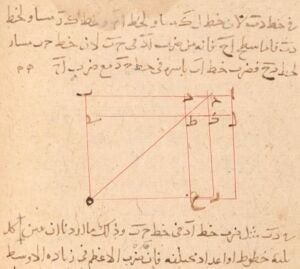Mathematical Philology in the Treatise on Double False Position in an Arabic Manuscript
Oct. 22, 2020 | Alexandre Roberts, assistant professor of classics
 A medieval Arabic manuscript at Columbia University preserves a text about Double False Position (regula falsi), an algorithm still used today for approximating solutions to equations whose exact algebraic solution is unknown. The text offers a proof that this algorithm is valid. The only trouble is that the proof itself is not valid! At least this is what another medieval Arabic scholar argued, in marginal notes also preserved in the Columbia manuscript. Every medieval manuscript was produced by a scribe painstakingly copying out the whole thing by hand. Why would someone take the trouble to preserve a text whose proof was known to be invalid? And why include it in a manuscript right after the influential (and mathematically valid) work on algebra by Omar Khayyam? It turns out that medieval scholars, like at least some historians today, considered faulty proofs to be an important part of their mathematical tradition. Se my paper on this topic for more details.
A medieval Arabic manuscript at Columbia University preserves a text about Double False Position (regula falsi), an algorithm still used today for approximating solutions to equations whose exact algebraic solution is unknown. The text offers a proof that this algorithm is valid. The only trouble is that the proof itself is not valid! At least this is what another medieval Arabic scholar argued, in marginal notes also preserved in the Columbia manuscript. Every medieval manuscript was produced by a scribe painstakingly copying out the whole thing by hand. Why would someone take the trouble to preserve a text whose proof was known to be invalid? And why include it in a manuscript right after the influential (and mathematically valid) work on algebra by Omar Khayyam? It turns out that medieval scholars, like at least some historians today, considered faulty proofs to be an important part of their mathematical tradition. Se my paper on this topic for more details.